
All categories
Featured selections
Trade Assurance
Buyer Central
Help Center
Get the app
Become a supplier

(30390 products available)

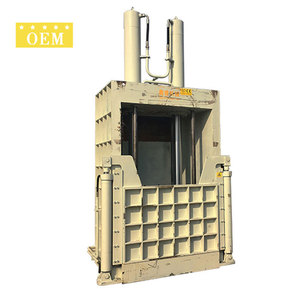
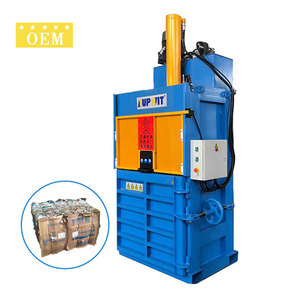
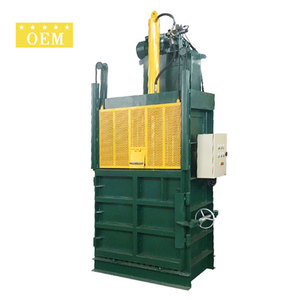



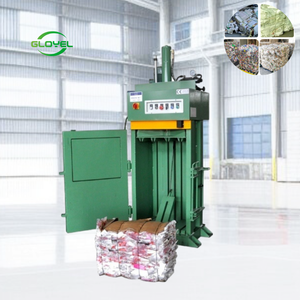








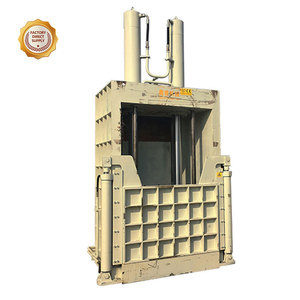
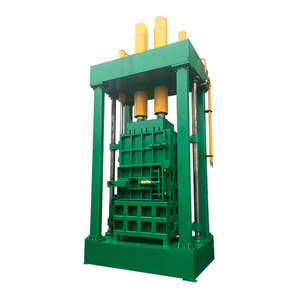


Baling machines for plastics are plastic baling machines used to compress waste plastic into bales or bundles for easy handling, recycling, and storage. They are primarily used in recycling facilities, industrial plants, and waste management operations. These machines are designed to reduce the volume of plastic waste by applying hydraulic or mechanical force to create compact units secured with strapping or ties.
According to the direction of the pressing box, plastic baling machines can be broadly classified into two categories: vertical plastic baling machines and horizontal plastic baling machines.
The pressing box of a vertical plastic baling machine is in a vertical position. This kind of baler is usually compact in size and takes up a small area. It is simple to operate and can handle various plastic materials quickly and efficiently. Additionally, some vertical plastic balers are equipped with automatic bagging functions, making them even more helpful and practical.
Vertical plastic baling machines are ideally suited for small to medium plastic waste disposal, such as those found in supermarkets, schools, shopping centers, and other places where people gather. They can help these venues save valuable space by vertically stacking the plastic waste, allowing it to occupy less room and be more aesthetically pleasing.
Horizontal plastic baling machines are generally suitable for larger-scale plastic waste volumes, such as those found in recycling stations, plastic products factories, and municipal integrated garbage transfer hubs. The substantial output and high degree of automation of horizontal plastic balers make them well-equipped to meet the needs of large-scale plastic waste disposal, thus playing an essential role in promoting environmental sustainability.
Horizontal plastic baling machines offer great versatility; they can be integrated into complete automatic recycling lines or used individually according to specific requirements. Additionally, certain models provide distinct bundling methods, such as intermittent or continuous bundling, to cater to different operational demands and enhance efficiency further.
Capacity:
The capacity of the plastic baler is an amount of plastic waste that can be processed in a specific time period. It is measured in tons per hour or kg per hour and depends on factors such as machine model and design, compression time, and feeding method.
Power:
Plastic baler power indicates the machine's horsepower or electrical power, usually measured in kilowatts (kW) or horsepower (HP). Higher power means higher compression capacity and efficiency.
Dimensions:
The size of a plastic baler includes length, width and height. The dimensions may vary depending on the type and model of the baler. The dimensions determine the area occupied by the baler and its capacity to process plastic waste.
Bale Weight:
The weight of bales produced by plastic balers varies depending on the type of machine and settings. Usually, the weight of bales ranges from 20 kilograms to 200 kilograms.
Clean the machine:
Use a vacuum cleaner or air supply to remove any plastic scraps from the machine. Regularly clean the compressed chamber, platform, and exit of the bag to ensure smooth operation and avoid blockages.
Lubrication:
Apply lubricant oil to each movement part of the plastic baler to ensure smooth operation and avoid wear and tear. Pay special attention to lubrication of sliding parts and operating chains.
Check electrical system:
Regularly check the electrical system of the baler, including cables, connectors, and switches, among others. Make sure the connections are secure and there are no signs of damage or corrosion, ensuring the scalability and safety of the machine.
Operating procedure:
When using the plastic baler, follow the operating instructions to ensure proper use and avoid damage to the machine. Before use, make sure the plastic is in the proper condition and ensure proper sealing and strapping during the baling process.
Plastic baling machines are vital tools in industries that handle plastic waste and other materials, both for recycling purposes and to create compact merchandise for easier transport and storage.
Understanding packaging needs
Bulk plastic baling machines have varying capacities, which are measured in pounds per bale. Knowing what the average weight of the plastic waste is helps businesses choose the machine that can handle their typical load. The capacity ranges from 250 to 500 kilograms.
Available floor space
Today, many facilities prefer horizontal plastic baling machines because they need less floor space. When considering vertical vs. horizontal balers, one should remember that horizontal balers are more efficient at processing volumes of waste quickly, but they do take up floor space.
Manual vs. Automated Feeding
Determine whether the operation requires manual feeding of plastic waste into the baler or if an automated system (like a conveyor) should be used. Generally, manual feeding requires more frequent staff involvement and, therefore, slower processing times. Balers with automated feeding are more expensive but have faster processing times.
Energy Source
Most plastic balers are either electric or hydraulic. Electric balers are energy efficient, but hydraulic balers can handle thicker plastics with more certainty. Consider whether the facility has 3-phase electricity or single-phase.
Transport mechanism
Is it better to have a plastic baling machine that uses conveyors or chutes for transport? Conveyors are more versatile as they can send plastic waste in different directions, but chutes are more compact and take up less space.
Q1: What is the difference between manual and automatic plastic baling machines?
A1: In a manual baler, the operator uses a lever or manual controls to insert waste material and initiate the baling process. On the other hand, an automatic baler uses an electric motor-driven press and an automatic cycling control system.
Q2: Are plastic baling machines eco-friendly?
A2: Yes. Recycling plastic is good for the environment because it lessens the need for new plastic production and cuts carbon emissions and energy use. Transporting plastics is now more economical thanks to baled plastic.
Q3: How often are plastic bales made in a machine?
A3: In commercial and industrial settings, frequent baling is required due to the vast amount of waste material produced. Depending on the site, plastic type, and baler, many or up to 20 plastic bales daily can be made. In a home setting, one plastic bale every month may suffice.
Q4: What is the operation of a plastic baling machine?
A4: Sorting the plastic garbage is the first step in the procedure. The numerous types of plastic are then gathered into a tiny fraction by the baler. The plastic is compacted into a tightly packed bale using a steel tying wire or a PET strap to keep it together.
Q5: Does a plastic baling machine help in reducing the carbon footprint?
A5: Yes, when done correctly, recycling can cut the carbon footprint. Carbon emissions connected to the extraction, transportation, and refining of new materials are significantly reduced by utilizing recycled materials in production.